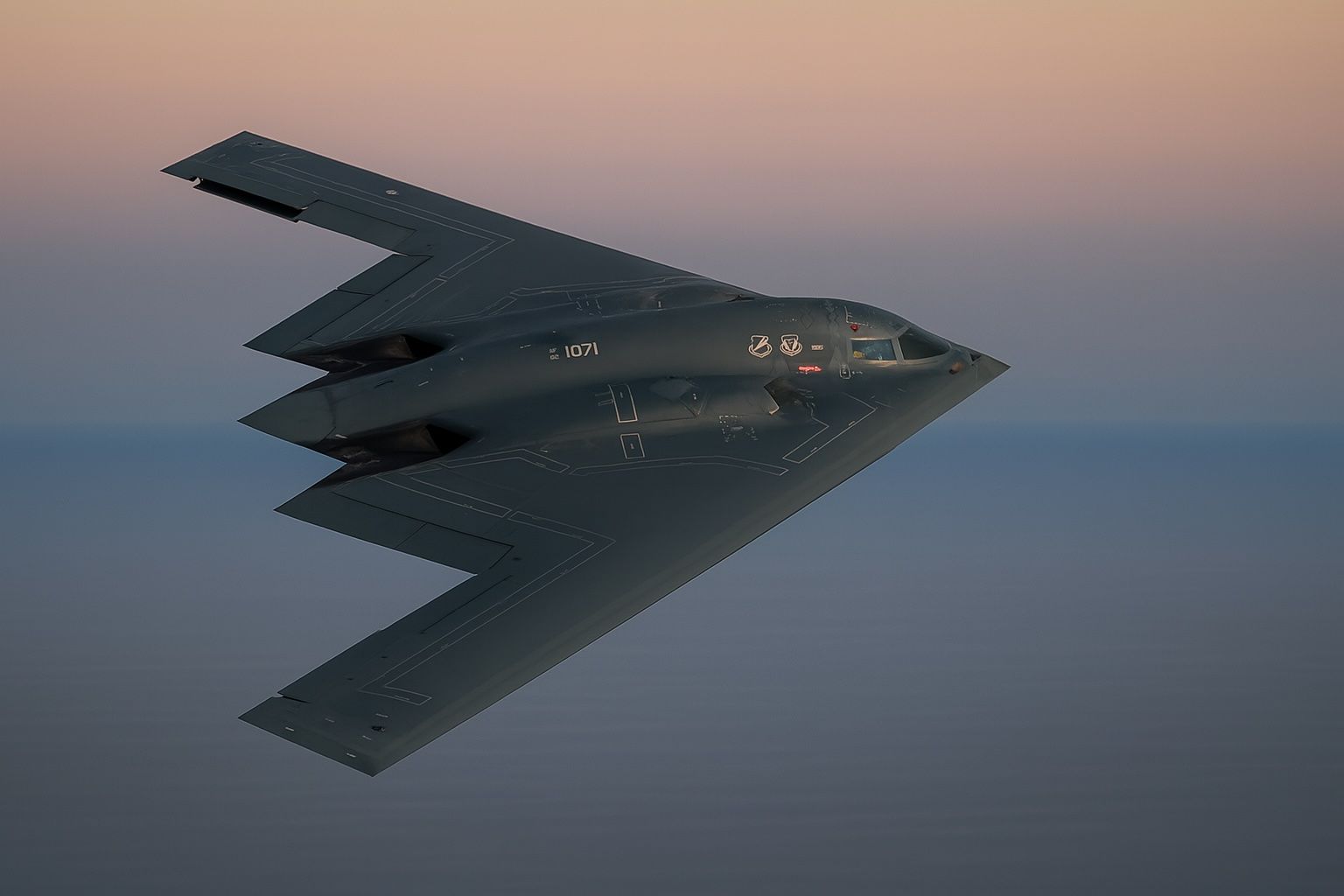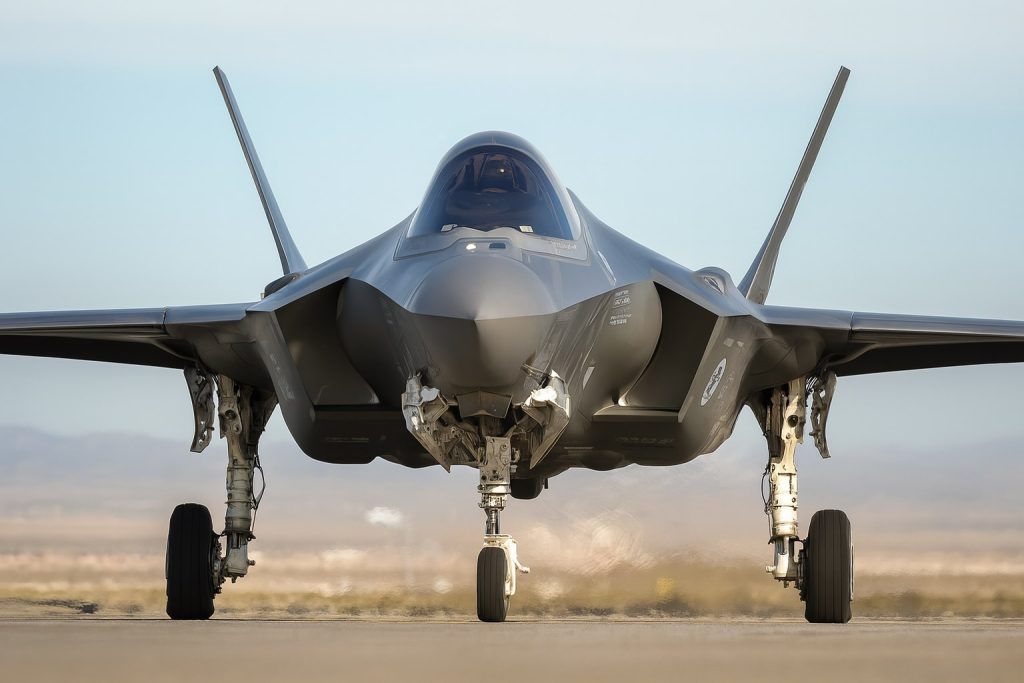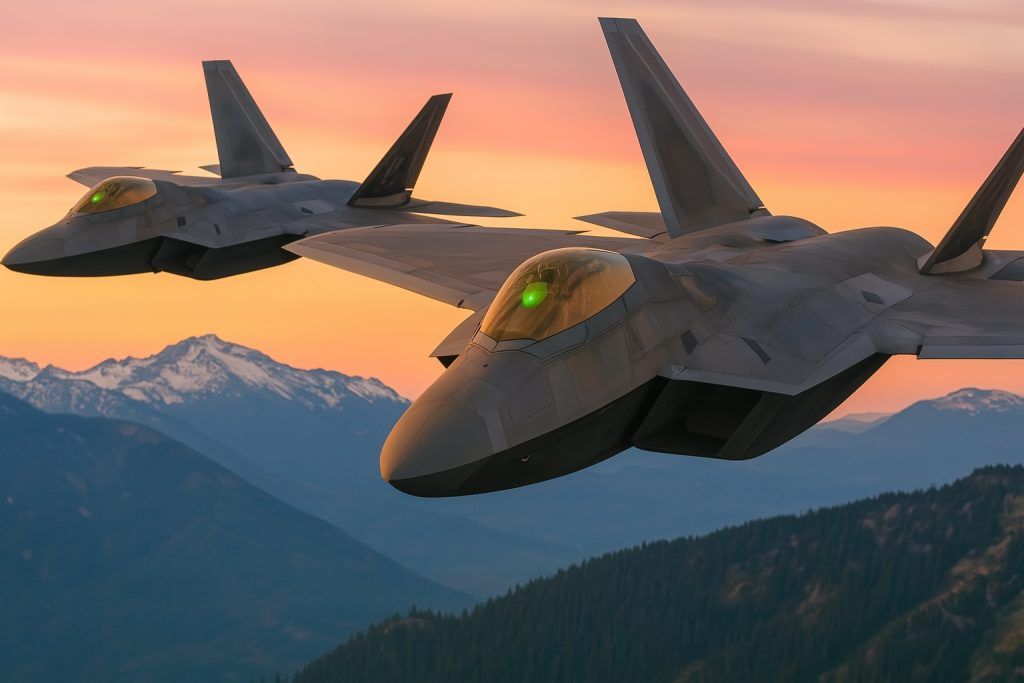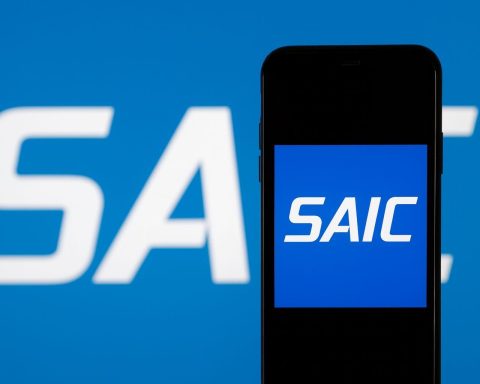- March–May 2025: six B-2 Spirit bombers deployed to Diego Garcia to strike Houthi targets in Yemen, marking the bomber’s first combat employment in years.
- June 21–22, 2025: seven B-2s launched from Whiteman AFB for Operation Midnight Hammer, striking Iran’s Fordow and Natanz facilities after an 18-hour flight with multiple refuelings and dropping 14 GBU-57A/B Massive Ordnance Penetrators.
- Simultaneously, a U.S. Navy submarine launched more than two dozen Tomahawk missiles to Isfahan to destroy surface infrastructure.
- By June 23, 2025, the B-2s had returned to Whiteman AFB, capping a mission described as the largest B-2 strike in history and the second-longest B-2 mission flown.
- The Air Force continued modernization in 2025 with a beyond-line-of-sight SATCOM suite that dramatically improves in-flight connectivity and real-time mission data transfer.
- Stealth and survivability upgrades advanced, including improved radar-absorbing materials and new onboard sensors to boost battlefield situational awareness.
- May 28, 2025, saw a hot-pit refueling of a B-2 at Whiteman AFB, while the System Program Office maintains 2–3 upgrade projects concurrently with hundreds of software updates and periodic hardware mods.
- As of mid-2025, 19 B-2 Spirits remain in active service, all based at Whiteman AFB under the 509th Bomb Wing.
- A December 10, 2022 in-flight emergency led to a six-month safety grounding, and in 2024 the Air Force divested the damaged airframe, reducing active inventory from 20 to 19 jets.
- The B-21 Raider progressed in 2025, with its first flight in late 2024 and low-rate initial production by early 2025, and the Air Force plans to acquire at least 100 B-21s to replace the B-2 by about 2029–2030.
2025 has been a turbulent and historic year for the U.S. Air Force’s B-2 Spirit stealth bomber. From top-secret combat missions in the Middle East to cutting-edge upgrades and high-level defense budget battles, the iconic flying wing has dominated headlines. This long-form roundup explores everything B-2 in 2025 – including global deployments and missions, maintenance and modernization efforts, policy changes, accidents and groundings, plus expert commentary and official statements that shed light on the bomber’s present and future.
Global Combat Deployments and Missions
The B-2 Spirit proved its worth in active operations during 2025, deploying across the globe for real-world missions. In an era when its replacement (the upcoming B-21 Raider) is on the horizon, the veteran stealth bomber was called upon for high-stakes strikes in multiple theaters:
- March–May 2025 – Yemen Campaign: In a lesser-publicized move, six B-2s deployed to Diego Garcia in the Indian Ocean to conduct strikes against Houthi militant targets in Yemen [1]. This marked the B-2’s first combat employment in years. Flying from the remote atoll base, the Spirits carried out a bombing campaign that lasted into early May, until the U.S. reached a ceasefire with the Houthi group [2]. After the truce, the B-2s were rotated out and replaced by B-52H Stratofortress bombers, which remained on station for presence missions [3]. This deployment underscored the B-2’s ability to project power quickly to distant conflict zones – a strategic capability reserved only for the U.S.’s long-range bombers.
- June 21–22, 2025 – Strikes on Iran’s Nuclear Sites (“Operation Midnight Hammer”): The B-2’s most dramatic mission of 2025 came in late June, when a task force of seven Spirits executed a surprise strike on Iran’s underground nuclear facilities. With tensions soaring from an Israel-Iran conflict, multiple B-2s launched from Whiteman AFB, Missouri, on June 21 and headed west toward the Pacific [4] – a decoy deployment to Guam intended to confuse observers and Iran’s defenses [5] [6]. Meanwhile, the actual strike package flew eastward in secret. After an 18-hour marathon flight with multiple aerial refuelings, the stealth bombers penetrated Iranian airspace on June 22, undetected by radar [7]. They dropped 14 GBU-57A/B Massive Ordnance Penetrator bombs (the 30,000-pound “bunker busters”) on Iran’s fortified Fordow and Natanz uranium enrichment sites – the first operational use of this super-heavy bomb [8] [9]. In coordination, a U.S. Navy guided-missile submarine launched “more than two dozen” Tomahawk cruise missiles to obliterate surface infrastructure at a third site (Isfahan) just as the B-2s struck underground targets [10] [11]. Thanks to meticulous planning and the B-2’s stealth, Iran’s air defenses were caught completely off guard – no Iranian fighters or missiles managed to engage the incoming raid [12] [13]. U.S. officials hailed the operation as a decisive success: Defense Secretary Pete Hegseth declared it “an incredible and overwhelming success” [14] that “devastated” Iran’s nuclear program [15], and Air Force Gen. Dan Caine, Chairman of the Joint Chiefs, praised the flawless stealth attack, saying “no other military in the world could have done this” [16]. By June 23, the B-2 bombers had safely returned to their home base in Missouri amid public fanfare [17] [18], cementing Operation Midnight Hammer as the largest B-2 strike in history (and the second-longest B-2 mission ever flown) [19].
These deployments highlight how the B-2 remains a frontline tool of U.S. power. In the words of one defense official, “We’re ready, willing, and able” to use it when needed [20]. Even as new conflicts emerge, the Spirit’s ability to fly anywhere on short notice and hit the world’s most defended targets gives it a unique strategic value.
Modernization and Technical Upgrades
Behind the scenes, 2025 also saw a major push to upgrade the B-2’s technology and keep the decades-old stealth bomber combat-ready against evolving threats. The Air Force Life Cycle Management Center (AFLCMC) continued to roll out enhancements as part of a continuous modernization program [21] [22]. B-2 program officials stress that the aircraft is not just a relic of the 1990s but a vital modern platform: “A lot of people talk about the B-2 as a legacy platform and that is incorrect: it is an operational platform conducting strikes today and if the flag goes up tomorrow, it will be one of the first platforms to conduct strikes,” explains Lt. Col. Robert Allen of the B-2 program office [23]. To ensure the Spirit stays effective until replacement, multiple high-tech upgrades were introduced or tested in 2025:
- Enhanced Communications: A new beyond-line-of-sight satellite communications suite is being integrated into the B-2, vastly improving the bomber’s in-flight connectivity. This upgrade “significantly improves the transfer time for real time mission planning data,” allowing crews to simultaneously receive and transmit voice and data – a major leap over the older single-threaded comms system [24]. In practice, a B-2 on a global strike mission (such as the Iran operation) can now re-plan targets or receive updates much faster via satellite link. Lt. Col. Allen noted this update will let B-2 pilots “aviate, navigate, communicate, strike their targets, and get home safely” even under dynamic combat conditions [25] [26].
- Stealth & Survivability: The B-2’s legendary low-observable coating and defensive systems are getting refinements to confront next-generation radar and missiles. Engineers are introducing improvements to the bomber’s radar-absorbing materials to further reduce its radar cross-section, as well as new onboard sensors to boost situational awareness in contested airspace [27]. These survivability upgrades give B-2 crews a better real-time picture of the battlefield, helping them adapt tactics on the fly. According to program statements, the hardware/software enhancements will ensure the B-2 “remains ready, effective, and survivable” against emerging threats [28] [29]. In short, even as adversaries improve their air defenses, the B-2 is being tuned up to stay one step ahead.
Airmen perform a “hot-pit” refueling on a B-2 Spirit at Whiteman Air Force Base in Missouri (May 28, 2025). Continuous upgrades – from faster communications to enhanced stealth coatings – are keeping the B-2 lethal and ready for action well into the 2020s [30] [31].
These efforts are part of an ongoing sustainment and modernization pipeline. The B-2 System Program Office typically has 2–3 upgrade projects in development at any time, rolling out hundreds of software improvements and periodic hardware mods [32] [33]. The overarching goal is to maintain the B-2 as a state-of-the-art strike platform until enough B-21 Raider bombers are fielded to take over its role [34] [35]. “Upgrading its avionics, sensors and communication systems are essential so that we stay ahead of emerging threats,” said Lt. Col. Benjamin Elton, another B-2 program leader [36]. Thanks to these upgrades, the B-2 in 2025 is far more advanced than when it entered service in 1997 – sporting modern digital systems while retaining its core stealth advantage [37] [38].
Accidents, Groundings, and Fleet Status
Even as it notched victories in 2025, the B-2 fleet has faced challenges. Notably, an incident in late 2022 cast a long shadow into this year. On Dec. 10, 2022, a B-2 experienced an in-flight emergency, crash-landed at Whiteman AFB and caught fire, severely damaging the airframe [39]. In response, the Air Force imposed a fleet-wide safety grounding (“safety pause”) for over six months while the mishap was investigated [40]. This grounding (lasting until mid-2023) meant no B-2s flew for half a year – a remarkable stand-down for an aircraft often on alert for global contingencies. By 2025, the fleet had returned to full operational status, enabling the bomber’s participation in the Yemen and Iran missions.
However, the damaged B-2 itself turned out to be beyond economical repair. In 2024, the Air Force confirmed it would not restore that aircraft, citing exorbitant costs and timeline concerns. Pentagon budget documents released with the FY2025 defense plan noted the B-2 “is being divested in FY 2025 due to a ground accident/damage presumed to be uneconomical to repair.” [41]. This effectively retires the aircraft from service, reducing the B-2 inventory from 20 to 19 operational jets (out of the 21 Spirits originally built) [42] [43]. It’s a testament to how valuable each B-2 is that the Air Force agonized over this decision – in an earlier 2010 incident, another badly damaged B-2 was painstakingly rebuilt over four years at a cost of $100+ million [44]. But with the new B-21 coming online (and only a few years of service left for B-2s), officials judged that pouring resources into one burned B-2 was no longer worthwhile [45].
Aside from that legacy accident, no major B-2 mishaps were publicly reported in 2025. The fleet’s mission-capable rates have improved post-grounding, and maintenance crews continue to keep the aging bombers airworthy for demanding global sorties. Each B-2 undergoes exhaustive depot maintenance every nine years at Northrop Grumman’s Palmdale facility [46], which helps ensure structural and systems integrity. As of mid-2025, 19 B-2 Spirits remain in the active force – all based at Whiteman AFB, MO, under the 509th Bomb Wing [47]. This small fleet performed impressively during 2025’s operations, but also underscores how finite the B-2 force is. Every aircraft is essentially irreplaceable, raising the stakes for both maintenance and mission planning.
Defense Policy and Funding Outlook
The year 2025 brought significant policy and funding developments shaping the B-2 program’s future. With the B-21 Raider stealth bomber expected to enter service by the late 2020s, the Air Force is actively planning the B-2’s phase-out and managing resources to bridge the transition. Key updates include:
- Retirement Timeline: Top leaders have signaled that the B-2 will likely bow out of service by the end of the 2020s. In fact, contracts and budgets point to a phase-out around FY2029. The Air Force’s FY2025 budget request included only modest B-2 funding through 2028, and a major sustainment contract awarded to Northrop Grumman (the B-2’s manufacturer) in May 2025 runs only until 2029 [48]. These align with an expectation that by 2030, a sufficient number of B-21 Raiders will be operational to fully replace the B-2 fleet. Internal plans suggest the B-2 could be retired one-for-one as B-21s are delivered – a phase-out by 2029 coinciding with about 21 B-21s being built (the same number as the original B-2 fleet) [49].
- Sustainment and Budget: In the near term, the Pentagon is still investing in the B-2 to keep it mission-ready. The 2025 sustainment contract for the B-2, valued up to $7 billion, ensures support for maintenance, spares, and upgrades through the rest of the decade [50]. However, beyond routine upkeep and the ongoing mod programs, no new B-2 acquisitions or major R&D efforts are planned – a clear sign that the platform’s sunset is on the horizon [51]. For perspective, the B-2 consumes a relatively small share of the Air Force budget (under 1% by some accounts) [52], yet it delivers outsized strategic punch. Congress has kept a close eye on bomber force structure in the annual defense policy bills, generally supporting the Air Force’s strategy to retire older bombers (like the B-1B and eventually B-2) as the B-21 comes online [53]. Lawmakers in 2025 focused on ensuring the nuclear deterrence mission is not compromised during this handover – meaning the B-2 must remain viable until the Raider is proven.
- B-21 Raider Progress: The shadow of the B-2’s successor looms large in 2025. Northrop Grumman’s B-21 Raider (a similarly stealthy flying-wing bomber) had its first flight in late 2024 and entered low-rate initial production by early 2025 [54]. Air Force leaders have not publicly committed to a strict one-for-one replacement of B-2s with B-21s, but they emphasize that maintaining bomber capacity is crucial [55] [56]. The Raider is expected to be cheaper to operate and even stealthier, and the Air Force hopes to acquire at least 100 of them in coming years. Until those new aircraft arrive in squadron service (likely starting in the late 2020s), the B-2 Spirit will continue to shoulder the nation’s long-range stealth bombing needs. Pentagon officials in 2025 repeatedly affirmed their “commitment to sustaining and modernizing the B-2” so that there is no capability gap [57]. The bomber community is effectively in a race against time to keep the B-2s in fighting shape as the B-21s gradually take over.
Leadership and Expert Commentary
Throughout 2025, military leaders and defense experts offered commentary that highlighted the B-2’s impactful role and the implications of its operations. Here are some of the most noteworthy quotes and insights from those in the know:
- President Donald Trump (Commander-in-Chief in 2025) – openly hinted at the B-2’s unique capability before ordering the Iran strikes. As speculation grew about U.S. action, Trump remarked on June 18, “We’re the only ones that have the capability to do it [strike Iran’s nuclear sites], but that doesn’t mean I’m going to do it… These are incredible planes and weapons.” [58] This statement underscored that the Spirit’s combination of stealth and firepower is something no other nation possesses – a fact that likely influenced Iran’s strategic calculus as well.
- Defense Secretary Pete Hegseth – in a Pentagon briefing after Operation Midnight Hammer, lauded the B-2-led attack in glowing terms. “The president authorized a precision operation to neutralize the threat… [it] was an incredible and overwhelming success,” Hegseth told reporters, emphasizing how decisively the B-2s destroyed their targets [59]. He later added that initial bomb damage assessments showed all bombs hit exactly as planned, dealing a severe blow to Iran’s nuclear ambitions [60]. Such public praise from the SecDef is rare and signals just how strategically significant the B-2 strike was.
- Gen. Dan “Razin” Caine, USAF (Chairman of the Joint Chiefs of Staff) – provided a detailed debrief of the Iran operation and extolled the B-2’s performance. He noted the mission was “planned and executed across multiple domains and theaters” with a level of coordination only the U.S. could achieve [61] [62]. Perhaps his most striking comment was his assessment of American airpower’s exclusivity: “No other military in the world could have done this.” [63] Gen. Caine’s point was that only the B-2, supported by a massive tanker and escort armada, could slip undetected into one of the most defended airspaces and deliver such devastating blows. It was a powerful reminder of the U.S. Air Force’s qualitative edge.
- Lt. Col. Robert Allen, USAF (B-2 Advanced Programs Branch) – highlighted the ongoing need to treat the B-2 as a living, breathing combat system rather than a museum piece. “People call the B-2 a legacy platform – that is incorrect,” he said. “It is an operational platform conducting strikes today… if the flag goes up tomorrow, it will be one of the first to conduct strikes.” [64] This quote, given during an Air Force Materiel Command update, proved prophetic as the B-2 indeed answered the call in multiple strikes this year. Allen’s perspective reflects the pride and urgency within the B-2 program to keep the bomber relevant through upgrades.
- Defense analysts and media – also weighed in. Industry observers called Operation Midnight Hammer “historic” and noted it had been carefully rehearsed for years [65]. Tyler Rogoway, a well-known aviation journalist, wrote that the mission “included assets from below the waves to space,” emphasizing the all-domain integration of B-2 strikes with cyber, naval, and space-based support [66]. The consensus among defense experts is that 2025 showcased the B-2’s continued strategic value, but also served as a demonstration of capabilities that the U.S. might not want to use often. “The B-2 Spirit stealth bomber is a game changer… a testament to our commitment to national security and global stability,” the Department of Defense noted in a June social media post [67], essentially reminding the world that America’s “ghost bomber” can hold any target at risk.
Conclusion: The B-2’s Legacy in 2025 and Beyond
From Middle Eastern battlefields to stateside hangars, the B-2 Spirit has had an eventful 2025 that underlines both its remarkable capabilities and the ticking clock of its service life. This year, the venerable stealth bomber executed precisely the kind of missions it was designed for – penetrating the world’s toughest defenses to strike critical targets – and did so with resounding success [68] [69]. It also received upgrades keeping it lethal in modern threat environments [70] [71]. Yet, we also saw the Air Force make pragmatic decisions to begin letting the B-2 go: retiring a damaged aircraft and mapping out a transition to the next generation B-21.
For a general audience fascinated by defense and aviation, the B-2’s 2025 saga is a case study in an aging but incomparable weapon system being used at full throttle even as it nears retirement. The Spirit proved it can still unleash “shock and awe” – whether raining bunker busters on a clandestine nuclear site or quietly flying global deterrence patrols. Its stealth technology, once revolutionary, remains formidable; Iran’s total surprise at the Midnight Hammer raid illustrates how the B-2 can still achieve complete tactical surprise in the 21st century [72] [73]. At the same time, the bomber’s small fleet size and high maintenance needs mean each mission is carefully weighed at the highest levels of government [74] [75].
In the words of a B-2 program leader, the aircraft is a “strategic asset” with a unique ability to “penetrate heavily defended airspace and deliver precision-guided munitions” – a role that remains vital as long as adversaries fortify their critical targets [76]. As 2025 comes to a close, the B-2 Spirit stands at a crossroads: celebrated for its successes this year, sustained by upgrades and funding for a few more years, but ultimately sunsetting as the torch passes to the B-21 Raider. If 2025 is any indication, the B-2 will not bow out quietly. It has cemented its legacy with daring missions and proven that even after three decades, it is still America’s premier stealth bomber – ready to fly into harm’s way at a moment’s notice, and reminding the world why it earned the name “Spirit.”
Sources: [77] [78] [79] [80] [81] [82] [83] [84] [85] [86] [87] [88] [89] [90] [91] [92] [93] [94] [95] [96] [97] [98] [99] [100]
References
1. www.airandspaceforces.com, 2. www.airandspaceforces.com, 3. www.airandspaceforces.com, 4. www.airandspaceforces.com, 5. www.twz.com, 6. www.twz.com, 7. www.twz.com, 8. theaviationist.com, 9. www.defense.gov, 10. www.twz.com, 11. www.twz.com, 12. www.twz.com, 13. apnews.com, 14. breakingdefense.com, 15. apnews.com, 16. www.twz.com, 17. apnews.com, 18. apnews.com, 19. www.twz.com, 20. www.airandspaceforces.com, 21. www.afmc.af.mil, 22. www.afmc.af.mil, 23. www.afmc.af.mil, 24. theaviationist.com, 25. theaviationist.com, 26. theaviationist.com, 27. theaviationist.com, 28. theaviationist.com, 29. theaviationist.com, 30. theaviationist.com, 31. theaviationist.com, 32. www.afmc.af.mil, 33. www.afmc.af.mil, 34. www.afmc.af.mil, 35. theaviationist.com, 36. www.afmc.af.mil, 37. www.afmc.af.mil, 38. www.afmc.af.mil, 39. www.airandspaceforces.com, 40. www.airandspaceforces.com, 41. www.airandspaceforces.com, 42. www.airandspaceforces.com, 43. www.airandspaceforces.com, 44. www.airandspaceforces.com, 45. www.airandspaceforces.com, 46. theaviationist.com, 47. apnews.com, 48. www.airandspaceforces.com, 49. www.airandspaceforces.com, 50. www.airandspaceforces.com, 51. www.airandspaceforces.com, 52. www.afmc.af.mil, 53. www.airandspaceforces.com, 54. www.airandspaceforces.com, 55. www.airandspaceforces.com, 56. www.airandspaceforces.com, 57. www.airandspaceforces.com, 58. www.airandspaceforces.com, 59. breakingdefense.com, 60. www.twz.com, 61. www.twz.com, 62. www.twz.com, 63. www.twz.com, 64. www.afmc.af.mil, 65. www.twz.com, 66. www.twz.com, 67. theaviationist.com, 68. apnews.com, 69. apnews.com, 70. theaviationist.com, 71. theaviationist.com, 72. www.twz.com, 73. apnews.com, 74. www.airandspaceforces.com, 75. www.airandspaceforces.com, 76. www.afmc.af.mil, 77. www.airandspaceforces.com, 78. www.airandspaceforces.com, 79. www.twz.com, 80. www.twz.com, 81. theaviationist.com, 82. www.defense.gov, 83. www.twz.com, 84. www.twz.com, 85. apnews.com, 86. breakingdefense.com, 87. apnews.com, 88. www.afmc.af.mil, 89. theaviationist.com, 90. theaviationist.com, 91. www.afmc.af.mil, 92. theaviationist.com, 93. www.airandspaceforces.com, 94. www.airandspaceforces.com, 95. www.airandspaceforces.com, 96. www.airandspaceforces.com, 97. www.airandspaceforces.com, 98. apnews.com, 99. apnews.com, 100. theaviationist.com










